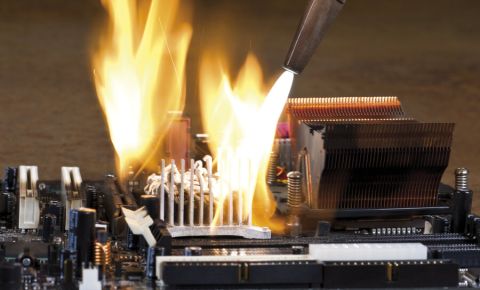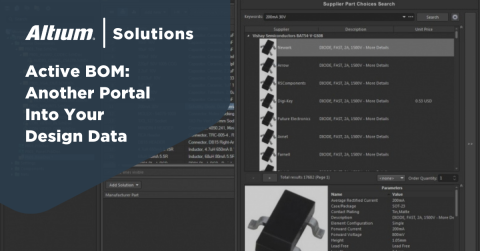Don't Stay in the Tower: BOM System Communication and Component Pricing Costs
Once upon a time, way back in the dark ages of the 20th century, there were three kingdoms: design, manufacturing, and purchasing. The royal design engineer’s process would look like this: they’d design the product, take their carriage to the manufacturing department kingdom where the designer would submit the design quickly and leave, trying to minimize as much chatter and cross communication as possible. The manufacturing engineers who receive the design would devise a parts list and pull straws to who had the displeasure of dealing their parts list to the purchasing kingdom. Finally purchasing would draw up the town suppliers and have them scramble over who had the smallest pleasure of deciphering the exact parts specified by poorly kept and shoddily handwritten lists. Then a dragon would swoop down and light all three kingdoms ablaze. I promise that’s how it worked.
Things have changed, though—now, it’s the 21st Century. Marketing remains ever-alert to changing trends, and are constantly pressing new requirements onto designers. The design kingdom grew too large for one territory and are now separated by continents, so in addition to responding to marketing they have to know, instantly, what changes every other design team is proposing. Similarly, the purchasing people have to be ready to hit a moving target, and suppliers, too, need to be nimble.
Nobody has the time anymore to track information through hordes of archived emails, text messages, or phone calls and voicemails. The necessary design information needs to be tracked live in a real-time updating cloud-based format that is available to all. Thankfully, we’ve developed the bill of materials (BOM) management software to do all this and have consistent component pricing availability. The dark ages are over for your PCB designs—bypass the walls of our processing kingdoms to have the smart communication we need in the BOM software that’s available.
BOM System Management: Talk to Each Other, Not the Mirror
A modern BOM management software facilitates communications between all members of the team. The key to the process is that the engineer can instantly see the modifications that the parts supplier makes on their screen, and the parts supplier is also immediately aware of the engineer’s changes. Up-to-the-moment component pricing is an immediately applicable feature for a BOM conversation. Below is an example of the steps in a typical exchange between the designer and a parts supplier.
- The design engineer will share the early-stage design to the parts supplier. This gives an idea of the parts recommendations and enables a degree of futurity to the project.
- The parts supplier suggests recommended parts changes based on their knowledge of inventory, parts interactions, or pricing changes through interacting with the BOM on their screen.
- The engineer can then accept or pass any of the supplier’s suggestions, making any necessary changes to the layout of the design in the process to show updated component necessities.
- This process can then be repeated as many times as necessary to supply the right components for your production and pricing needs.
All the while, similar exchanges take place between other parties to the project. The two main caveats are that everyone involved is immediately made aware of every change, and nothing should ever be erased—all too often, somebody’s bright idea will turn out to be less effective due to component supply inventory, unreasonable pricing, or design flaws. If backtracking ever needs to be accomplished, then archived projects and BOM lists will be allow backtracking to a point before a design has gone wrong quickly and easily.
Keep These Traits in Mind While You Modernize Your BOM
Emails and spreadsheets get sent, but did you notice the subsequent email that changed the whole game? You got that spreadsheet, but did everyone else? Most importantly, did management agree with the proposals? And don’t forget the wizard’s advice that your high component density would run into soldering problems during manufacturing. In addition to faster communication for all, a properly applied BOM management software eliminates confusion with essential features:
Access Control: With proper BOM management software, you can make sure that the various hands in your cauldron can only see and interact with what they need. Different stakeholders can be given access to view and make changes based on the specific privileges they’ve been granted.
Universality: It doesn’t do much good if your BOM solution doesn’t work with some CAD systems. Ensure that your BOM software can interact with the mechanical, electronic, and software specifics that you need.
Availability: Often you will find yourself interacting with design team members, manufacturers, suppliers, and field servicers who are all over the globe. It is important to be able to leave real-time notes, have accurate component and inventory control at all hours, and maintain an open-access platform for any team member’s needs. After all, nobody wants to be woken up from a call from an international team member just for BOM access. A cloud-based solution will be available at all hours to ensure you can rest easy.
Buy In: Your divergent teams across the disciplines will all be using a multitude of software systems to accomplish their tasks. Your BOM management software must be able to interface and incorporate technological and software innovations in modern systems.
Fortunately, a BOM management software doesn’t need to be centered around one of those ancient kingdoms anymore—it is fully capable of meeting the needs of designers, manufacturers, suppliers, customers, and all of the interested parties
You Don't Need a Great Wall
With smart BOM software, you don’t need to scale and tackle an immense wall between the different facets of your design process. Instead, clear and consistent communication practices are all you need to enforce in order to maintain inventory and manufacturing goals. Leaving detailed notes, and making sure to check updated information is a click of a button instead of three email threads, fourteen web-browser tabs and a quest to find the holy grail.
Configure your BOM software to provide the information you need from your current supplier’s part status, availability and any present alternative parts that can save you time and money. Keep your design moving and avoid holding up any part of your pcb design software’s process. Easy inventory management takes a load of stress and frustration out of any conversational interaction between manufacturers, designers, and suppliers—Altium’s BOM software keeps things simple.
If you want to move out of your communication dark ages and jumpstart progress into the 21st century, talk to an expert at Altium today.










